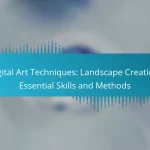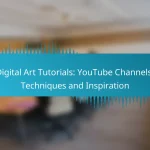Digital art platforms have become essential for creatives, offering a range of tools tailored to various artistic needs, from professional design to casual illustration. Selecting the right platform is crucial, as it can significantly impact your creative process and help you achieve your artistic goals. Additionally, staying informed about current trends, such as AI-generated art and augmented reality, can inspire new approaches and enhance your work.
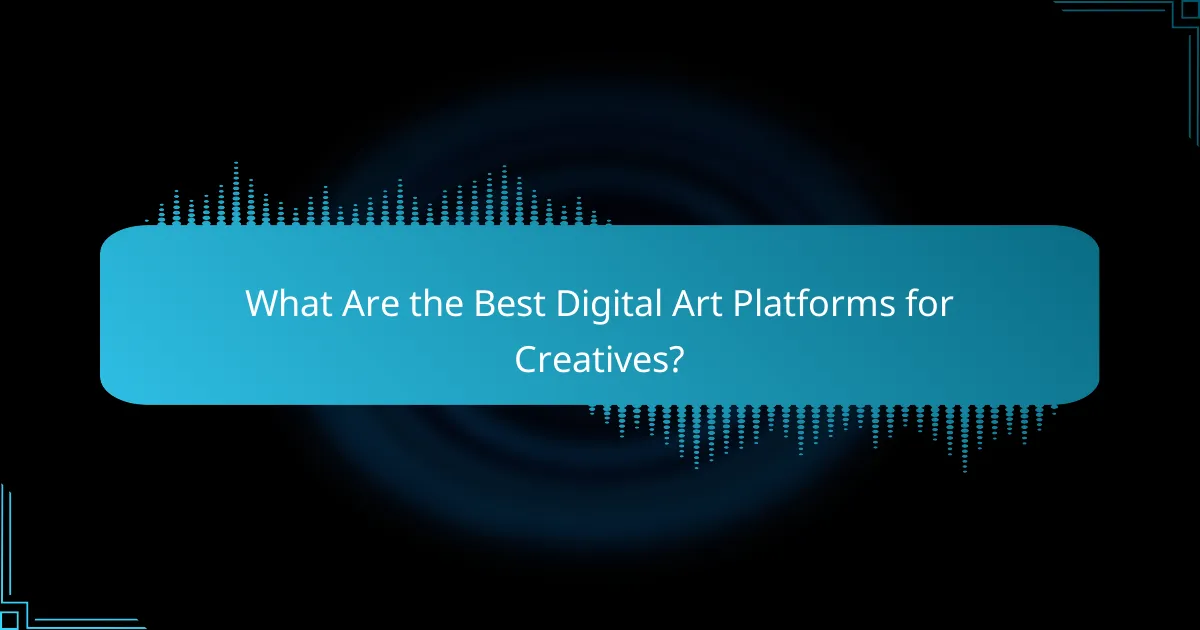
What Are the Best Digital Art Platforms for Creatives?
The best digital art platforms for creatives include a variety of tools that cater to different artistic needs, from professional design to casual illustration. These platforms offer unique features that can enhance creativity and streamline the artistic process.
Adobe Creative Cloud
Adobe Creative Cloud is a comprehensive suite of applications widely used by professionals in graphic design, photography, and video editing. Key programs like Photoshop and Illustrator provide powerful tools for creating detailed artwork and graphics.
Consider the subscription model, which offers flexibility but can be costly over time. Many users benefit from the extensive tutorials and community support available, making it easier to learn and master the software.
Procreate
Procreate is a popular digital painting app designed specifically for the iPad, known for its intuitive interface and robust features. It offers a wide range of brushes and tools that mimic traditional painting techniques, making it ideal for illustrators and concept artists.
With a one-time purchase fee, Procreate is cost-effective compared to subscription-based software. Users appreciate its portability and the ability to create high-resolution artwork directly on a tablet.
Corel Painter
Corel Painter is a digital art software that specializes in simulating traditional painting techniques. It provides a vast array of brushes and textures, allowing artists to create realistic paintings and illustrations.
While it has a steeper learning curve, the investment can be worthwhile for artists seeking to replicate traditional media digitally. Regular updates and new features enhance its functionality over time.
Canva
Canva is a user-friendly graphic design platform that allows users to create a variety of visual content, from social media graphics to presentations. Its drag-and-drop interface makes it accessible for beginners and non-designers.
Canva offers a free version with basic features, while the Pro version unlocks advanced tools and assets. It’s an excellent choice for quick designs and collaborative projects, but it may lack the depth needed for detailed artwork.
ArtStation
ArtStation is a platform for artists to showcase their work, connect with other creatives, and find job opportunities. It serves as an online portfolio and community hub, particularly for concept artists and illustrators.
Artists can create a free account to upload their portfolios and gain visibility. The platform also features job listings and educational resources, making it a valuable tool for career development in the creative industry.

How to Choose the Right Digital Art Platform?
Choosing the right digital art platform depends on your individual needs, including ease of use, available features, and community engagement. Consider what tools and support will best enhance your creative process and help you achieve your artistic goals.
Consider user interface
The user interface (UI) of a digital art platform significantly impacts your workflow. A clean, intuitive UI allows for quicker navigation and a more enjoyable experience, especially for beginners. Look for platforms that offer customizable layouts, as these can enhance your efficiency.
Test different platforms to find one that feels comfortable. Many platforms offer free trials, allowing you to explore their UI before committing. Pay attention to how easily you can access tools and features you use frequently.
Evaluate available tools
When evaluating digital art platforms, consider the range and quality of tools they provide. Look for features like brushes, layers, and filters that align with your artistic style. Some platforms may excel in specific areas, such as illustration or photo editing, so choose one that fits your primary focus.
Additionally, check for compatibility with hardware like graphics tablets and styluses. Some platforms offer advanced features like 3D modeling or animation tools, which may be beneficial if you plan to expand your skills in those areas.
Assess community support
Community support is crucial for learning and growth in digital art. Platforms with active user communities often provide forums, tutorials, and feedback opportunities that can enhance your skills. Look for platforms that host regular challenges or events to engage users and foster collaboration.
Research the availability of resources such as online courses, webinars, and user-generated content. A strong community can offer valuable insights and inspiration, making your artistic journey more rewarding.
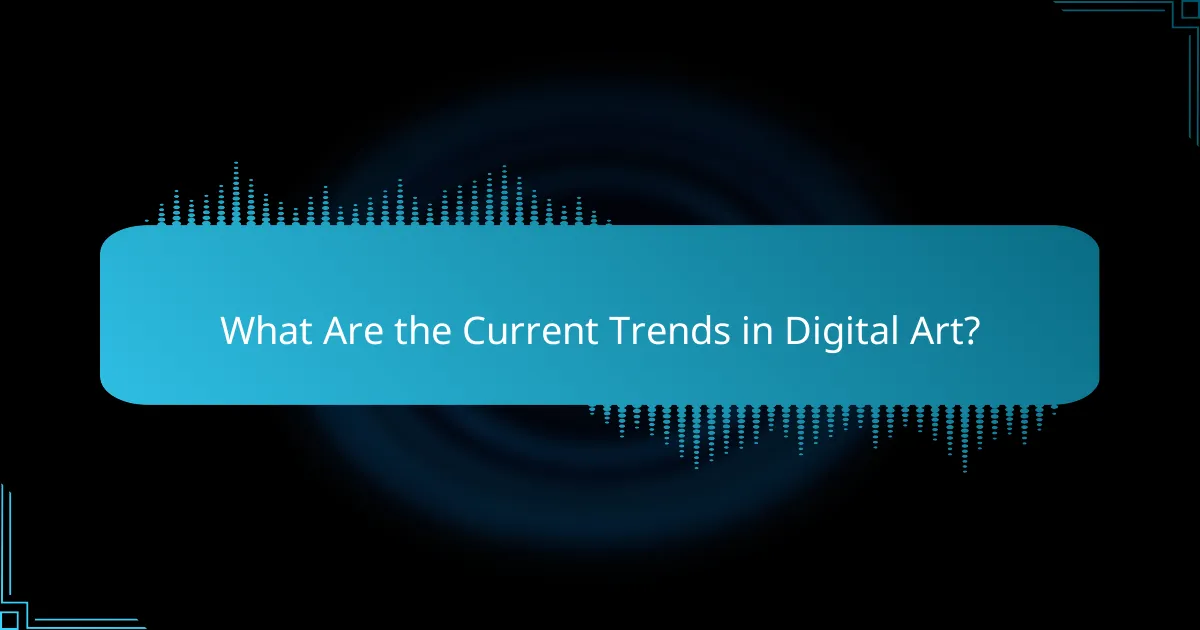
What Are the Current Trends in Digital Art?
Current trends in digital art include the rise of AI-generated art, the integration of augmented reality, and the development of 3D digital art. These trends reflect technological advancements and changing consumer preferences, shaping how artists create and share their work.
AI-generated art
AI-generated art utilizes algorithms and machine learning to create unique pieces, often by analyzing existing artworks and styles. This trend allows artists to explore new creative avenues, producing works that can range from abstract designs to photorealistic images.
Artists can use platforms like DALL-E or Midjourney to generate art quickly, but it’s essential to consider copyright implications and the ethical aspects of using AI in creative processes. Balancing originality with AI assistance can be a challenge.
Augmented reality integration
Augmented reality (AR) integration in digital art enhances the viewer’s experience by overlaying digital elements onto the physical world. Artists are now creating interactive installations that can be viewed through smartphones or AR glasses, making art more immersive.
To effectively use AR, artists should focus on user engagement and ensure that the digital elements complement the physical artwork. Platforms like Artivive allow artists to easily create AR experiences, but they should also consider the accessibility of technology for their audience.
3D digital art
3D digital art involves creating three-dimensional models and animations, often used in gaming, film, and virtual reality. This trend has gained popularity due to advancements in software and hardware, enabling artists to produce highly detailed and realistic visuals.
Artists interested in 3D digital art should familiarize themselves with tools like Blender or Autodesk Maya, which offer extensive features for modeling and rendering. It’s crucial to stay updated on industry standards and trends, as the field is rapidly evolving with new techniques and technologies.
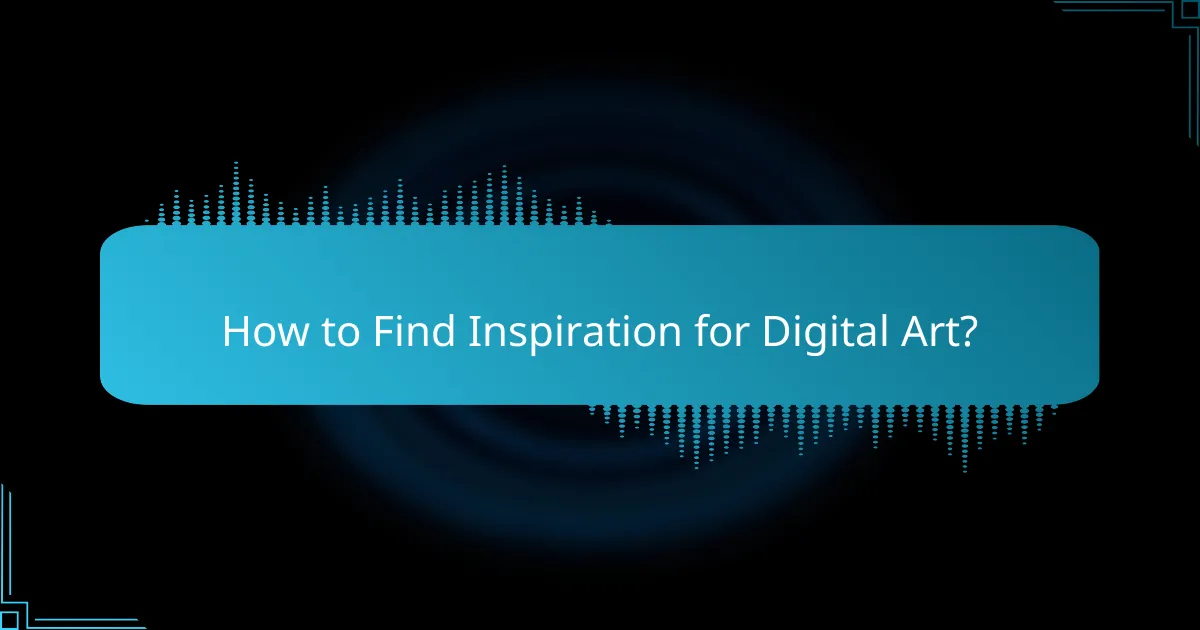
How to Find Inspiration for Digital Art?
Finding inspiration for digital art involves exploring various sources that stimulate creativity and provide fresh ideas. Engaging with diverse platforms and communities can spark new concepts and techniques to enhance your artistic practice.
Online art communities
Online art communities are platforms where artists share their work, receive feedback, and connect with peers. Websites like DeviantArt, ArtStation, and Behance allow artists to showcase their portfolios and discover others’ creations, fostering a collaborative environment.
Participating in forums or groups within these communities can lead to valuable exchanges of ideas and techniques. Look for groups that align with your interests, whether it’s digital painting, 3D modeling, or illustration, to maximize your inspiration.
Social media platforms
Social media platforms such as Instagram, Pinterest, and TikTok are rich sources of inspiration for digital artists. By following artists, hashtags, and art-related accounts, you can easily access a constant stream of innovative ideas and trends.
Utilize features like Instagram Stories or TikTok videos to see artists’ processes in real-time. Engage with the content by commenting or sharing your thoughts, which can help build connections and inspire your own work.
Art challenges and prompts
Art challenges and prompts are excellent ways to push your creative boundaries and generate new ideas. Many platforms host monthly or weekly challenges, encouraging artists to create based on specific themes or prompts.
Participating in these challenges can help you develop a routine and explore styles you may not typically use. Look for challenges on platforms like Instagram or through dedicated websites, and consider setting personal goals to keep your creativity flowing.
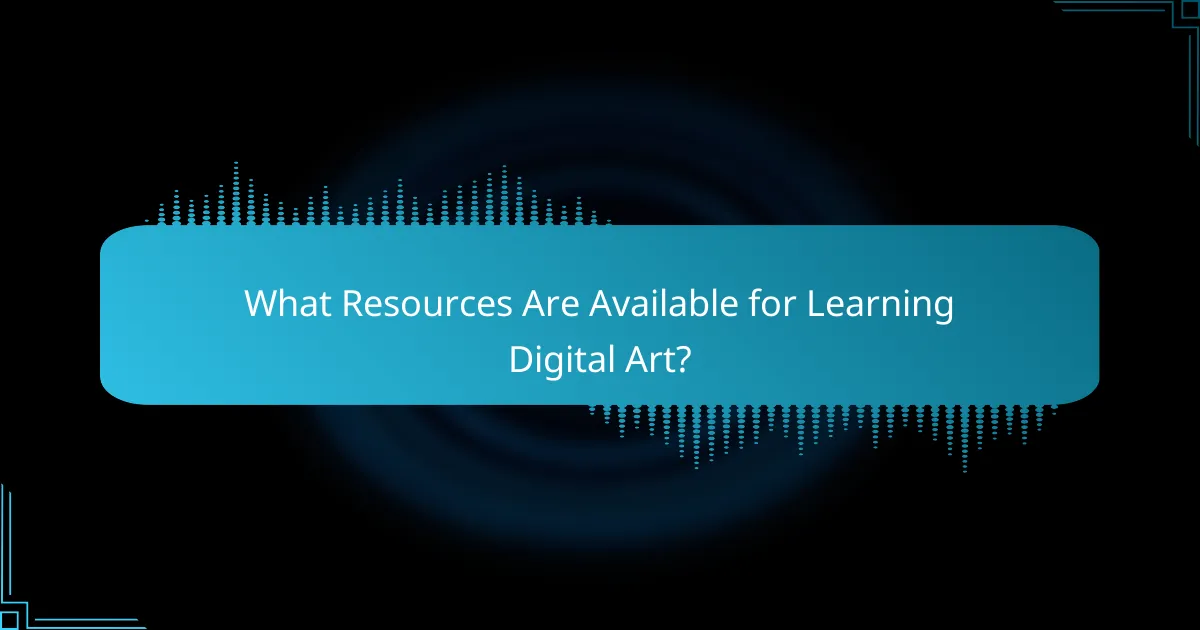
What Resources Are Available for Learning Digital Art?
Numerous resources exist for learning digital art, catering to various learning styles and preferences. From structured online courses to free YouTube tutorials and informative books, aspiring artists can find valuable materials to enhance their skills.
Online courses
Online courses offer a structured approach to learning digital art, often featuring video lectures, assignments, and community feedback. Platforms like Skillshare, Udemy, and Coursera provide a range of courses, from beginner to advanced levels, typically priced between $10 and $200 depending on the course length and instructor expertise.
When selecting an online course, consider factors such as course reviews, the instructor’s background, and whether the course includes hands-on projects. Look for courses that offer a certificate upon completion if you want to showcase your skills professionally.
YouTube tutorials
YouTube is a treasure trove of free tutorials for digital art, covering everything from basic techniques to advanced software tips. Channels like Proko, Aaron Blaise, and Ctrl+Paint provide high-quality content that can help you grasp concepts quickly without any financial investment.
To make the most of YouTube tutorials, create a playlist of videos that align with your learning goals. Engage with the community by commenting and asking questions, which can enhance your understanding and provide additional insights.
Books and eBooks
Books and eBooks on digital art can serve as comprehensive guides, offering in-depth knowledge on techniques, tools, and artistic principles. Titles like “Digital Painting Techniques” and “The Digital Artist’s Handbook” are popular among learners and can often be found for $20 to $50.
When choosing a book, look for those that include step-by-step tutorials and visual examples. EBooks can be a convenient option, allowing you to access materials on various devices, making it easier to learn on the go.

What Are the Pricing Models for Digital Art Platforms?
Digital art platforms typically employ various pricing models, including subscription fees, commission-based sales, and one-time purchases. Understanding these models helps artists choose the right platform for their needs and financial goals.
Subscription-Based Models
Subscription-based models require users to pay a recurring fee, often monthly or annually, to access the platform’s features. This model can be beneficial for artists who frequently create and sell digital art, as it often includes tools and resources that enhance productivity.
Common subscription fees can range from around $5 to $50 per month, depending on the platform’s offerings. Artists should assess how often they will use the platform to determine if a subscription is cost-effective.
Commission-Based Sales
Commission-based sales involve platforms taking a percentage of each sale made by the artist. This model is popular among marketplaces where artists can showcase their work to a broader audience without upfront costs.
Commission rates typically range from 10% to 30%. Artists should consider the trade-off between exposure and the percentage taken by the platform when deciding where to sell their art.
One-Time Purchase Options
One-time purchase options allow artists to sell their work for a fixed price without ongoing fees. This model is straightforward and can be appealing for those who prefer not to share profits with a platform.
Artists should ensure that the pricing reflects the value of their work and consider market trends when setting prices. Additionally, they should be aware of any platform fees that may apply to transactions.

